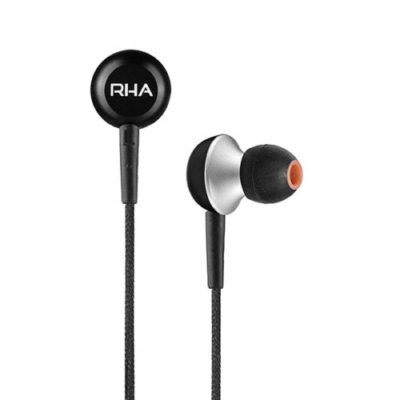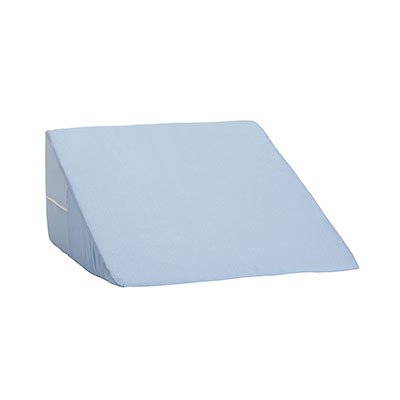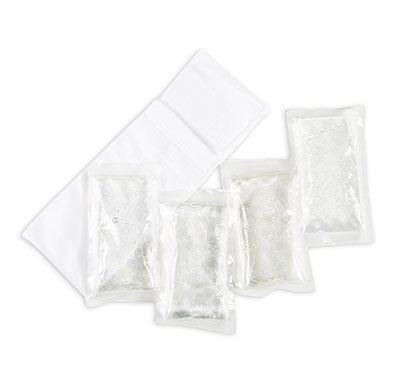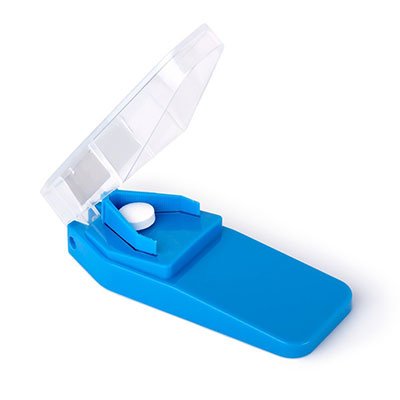Table of Contents[Hide][Show]
- Why Don’t We Have Room for Wisdom Teeth?
- Will I Need Mine Removed?
- What to Ask at the Consultation:
- What Happens If I Don’t Have Them Removed?
- What’s the Best Time to Get Wisdom Teeth Removed?
- How Long Can I Wait to Get Them Removed?
- How Long Is Wisdom Teeth Recovery Time?
- What to Expect the First Twelve Months After Surgery
- Who Should Perform a Wisdom Teeth Removal Surgery?
- How to Prepare for Wisdom Teeth Surgery
- During the Procedure: What to Expect
- When to call your dentist or surgeon
So, your dentist says you need to undergo wisdom teeth removal and you’re feeling a little apprehensive. Here’s everything you need to know before you go in for surgery (and how to ensure a speedy recovery) so you can go into the process feeling prepared.
By the end of this post, you’ll know:
- What to ask your dentist
- What to expect during the procedure
- What to expect in terms of pain
- How to prevent a dry socket
How Necessary Is Wisdom Teeth Removal?
Simply put, there isn’t enough room for wisdom teeth because our jaws don’t grow to be big enough to have enough space for them to come in. Since there isn’t enough room for them to erupt properly, wisdom teeth tend to come in at an angle or they don’t fully emerge, which causes problems for the rest of the mouth.
Third molars (the wisdom teeth) routinely damage the teeth right next door, called second molars. Dentists recommend removing wisdom teeth before they become a problem and to avoid a more complicated surgery.
In my practice, I see very few people who don’t need their wisdom teeth removed.
Get Dr. B’s Dental Health Tips
Free weekly dental health advice in your inbox, plus 10 Insider Secrets to Dental Care as a free download when you sign up

Why Don’t We Have Room for Wisdom Teeth?
Our jaws are smaller than they used to be. That’s not because of evolution — it’s because our modern diet lacks certain key nutrients that allow the jaw to develop properly.
One vitamin in particular, Vitamin K2, is responsible for letting the jaw develop by taking calcium in the body and putting it into the bones. Most people don’t grow up eating the kinds of food where you’d get Vitamin K2 — liver and organ meat as well as animal products from animals that eat grass (not grain or corn). The low-fat food craze of the 90s, as well as factory farming, have virtually obliterated Vitamin K2 from our diets.
That’s why, these days, an underdeveloped lower third of the face is so common that it has become the norm. Our ancestors and small tribes not eating the modern diet had great jaw development with room for all 32 teeth to come in straight.
So, how do you know if your jaw developed fully? It depends on your childhood. Eating raw, crunchy foods rich in the nutrients found in organ meats and grass-fed animal fats are what stimulate proper jaw development. Nowadays, childhood diets are heavy in soft, nutrient-poor foods like applesauce and Goldfish crackers. Bottlefeeding and sippy cups can also hinder proper jaw development. Our diets have gotten too soft and our jaws aren’t developing fully due to lack of use
Will I Need Mine Removed?
Try this right now: get a mirror and look at your bottom teeth. First, count how many of the big teeth you have at the back of your mouth—these are called molars. By age 12, you should see two molars in place. Wisdom teeth are your “third molars.”
To see if you have room for your wisdom teeth, put your finger behind either second molar. If you feel a flat pad of tissue, then you may have enough room! If you feel the tissue curving upwards, chances are you don’t have room for your wisdom teeth. Of course, this is a rough estimation and you’re going to need your oral surgeon to measure this space. This quick-and-dirty test is just to give you some idea of what your dentist is going to do to measure the space back there.
What to Ask at the Consultation:
- Do all of my wisdom teeth need to be removed?
- What are my options for anesthesia?
- What complications do you expect to see during the procedure? What is the worst case scenario?
- Compared to all of the other cases you have done, how does my case rank in terms of difficulty?
- What are the risks of doing this surgery?
- Will my face get puffy? How long will it be until my appearance is normal and I can return to school or work?
- What will happen if I leave my wisdom teeth in?
What Happens If I Don’t Have Them Removed?
The reason we remove wisdom teeth is to prevent them from damaging other healthy teeth. Often, wisdom teeth erupt perpendicularly to the teeth next door (your second molars). When wisdom teeth come in sideways like this, it throws off your bite, creates an area where food gets caught, decays both of the teeth, and can even cause a painful infection. So, if you skip the surgery today, it’s likely to cause complications and issues down the road.
But what if the wisdom teeth never come in? If your wisdom teeth don’t erupt and you leave them in, there is a 25% chance that the epithelial lining around the wisdom tooth will become cancerous. I found this in my mom while I was in dental school and it was successfully removed, but it was a complicated procedure. This is one of the many reasons that you get your wisdom teeth out earlier, rather than later, in life.
Of course, if you were born without wisdom teeth, then you can skip the rest of the article because you’re all good! This is not to be confused with people who still have wisdom teeth in the bone that haven’t erupted yet. A limited percentage of the population is born without wisdom teeth and those people never have to get surgery.
What’s the Best Time to Get Wisdom Teeth Removed?
Before the root is fully formed.
If the roots develop fully, it becomes way more difficult to do an extraction than when only the crowns (molars) have developed. Teeth grow from the crown down to the root, so if you get it done before the root develops, then the surgery is easier with less recovery time.
To imagine what this is like, think of a skateboard or a tennis ball buried in the sand—which is easiest to remove? The skateboard has to be dug out, but the tennis ball can be rolled out — this should give you some sense of why it’s better to do the surgery before the roots come in.
At the start of summer break.
I always recommend getting it done when life is simple, your health is good, stress is low, you have someone to take care of you, and have time to find a great surgeon (and not settle for a last minute choice). For most people, this time is during one of the summer breaks in high school. If you’re not lucky enough to have already had it done in high school, that’s okay—try to stick to the same guidelines when finding the ideal time. I will say that In my 30 years of dentistry, I’ve noticed wisdom teeth complications always happen right before a major life event, like a big exam, date, or wedding—so don’t delay!
How Long Can I Wait to Get Them Removed?
The thing you need to consider is: will things get worse if you wait? Wisdom teeth removal gets more complicated if the teeth become impacted and you and your dentist need to assess if waiting might make for a more complicated surgery.
Is there such a thing as getting it done too early? This is a tricky one because there’s always a chance that if you had waited a little longer to see how the teeth erupt, you could have enough room for them to come in. You have to trust and rely on your surgeon to be able to predict whether there will be space for this wisdom tooth—there’s a bit of an art to doing this. This is the reason I refer to certain surgeons whose work I’m familiar with and trust. Talk to family members, people in your community, and read reviews online. Use my tips for how to find an awesome dentist.
How Long Is Wisdom Teeth Recovery Time?
Typically about one week. Occasionally, it’ll take as short as four days to recover, but that’s usually just for straightforward surgery cases with no impaction or other complications.
Your recovery time will depend on:
- What type of anesthesia you choose.
You’ll be able to bounce back a lot faster if you have just local anesthesia or nitrous than if you have to go under. - Your nutrition during recovery.
In just about every case, I see people who have a straight diet of Jell-O and ice cream recover more slowly. - Preventing a dry socket.
A lot of people delay recovery several weeks by not following proper protocol after the surgery—including using a straw, not keeping the head elevated, or brushing their teeth too soon after surgery. See my tips for how to speed up wisdom teeth recovery and how to prevent a dry socket.
What to Expect the First Twelve Months After Surgery
- Thinning of the face, thanks to the lack of the presence of the wisdom teeth, which support the cheeks and muscles. Over time, it’s the lack of bone as it resorbs over many years. After many years, the muscular forces can also undergo a physical reprogramming, creating facial changes as well. It’s all three of the above happening at different times, but it’s amazing how visible the change is right away.
- Cold sensitivity on your second molars, to things like cold drinks or ice cream. This sensitivity goes away eventually as the teeth re-calcify but could take several months. Use a fluoride toothpaste designed for sensitive teeth, like Sensodyne.
- You may feel little folds in the gumline. This is caused by the bone remodeling and flattening out as part of the healing process. This can take up to a year.
- Don’t be surprised if, up to 5-10 years later, you feel a flake or sharp thing sticking out— that’s exfoliating bone fragments. It’s your body rejecting a small flake of bone left over from the surgery. If you feel that, see your dentist and they can flick it out.
- A little bone-ache occasionally. No one knows what that is, but it is perhaps caused by the process of bone remodeling.
- You may have TMD pain upon opening, jaw clicking, or it’ll be hard to keep your mouth open. This is likely caused by the oral surgeon having your mouth open for too long or too wide. Ice and rest your jaw, following these TMD treatment guidelines.
Who Should Perform a Wisdom Teeth Removal Surgery?
I always recommend seeing a specialist. Specialists have seen it all, and if the unexpected comes up during your surgery, it won’t be a surprise to them. But having said that, there are a lot of general dentists who do wisdom teeth removals routinely and are excellent. Just make sure you see a dentist or oral surgeon who does this kind of surgery all the time. Wisdom teeth surgery has a high complication rate if not done in the hands of an expert.
Make sure your dentist is using a dental drill specifically for oral surgery. The same drill that general dentists use for fillings and crowns should not be used for wisdom teeth surgery, as it can cause an air embolism, a serious complication. Ask your dentist, “are you using an electric/pneumatic handpiece that is designed for oral surgery?”
How to Prepare for Wisdom Teeth Surgery
Wisdom teeth removal is an outpatient procedure, meaning that you get to go home on the same day as the surgery. Ask your dentist or oral surgeon these questions beforehand:
- Are you willing to do a bone graft?
If you’re over 25 years old, I usually recommend getting a bone graft. When you take out an adult wisdom tooth, the tooth next to it has a level of bone that it’s accustomed to, but when you take out the tooth next door, you get some shrinkage. When the bone shrinks, that makes the tooth next door sensitive to sugar and cold drinks months after the surgery. Bone grafts prevent this. Usually, people under age 25 don’t need this, but it doesn’t hurt to ask! - Should someone drive me home?
This will depend on the type of anesthesia used. In the majority of cases, plan on having someone there to drive you home. - Should I fast before the surgery? If so, when do I begin the fast?
For local anesthesia, it’s good to have a light meal in your stomach a few hours before the procedure to keep blood sugar levels up. For any other kind of anesthesia, including nitrous, it’s best not to have a full stomach. - Can I take my prescription medications before the procedure?
- Are there any nonprescription drugs that I should avoid before the procedure?
What Kind of Anesthesia Will I Get?
Listed from least intense to more intense, your anesthesia options are the following:
- Local anesthesia. You’re awake during the procedure and will feel some pressure but no pain. Local is administered with injections near the site of each tooth being removed. Recovery time is best with local anesthesia.
- Sedation anesthesia.: Your consciousness is suppressed, you won’t feel any pain, and will have limited to no memory of the procedure. You’ll also get local anesthesia (see above) to numb the site of each tooth being removed. Anesthesia is given through an IV.
- General anesthesia.: You’re completely out. You’ll have no pain and no memory of the procedure. Local anesthesia is still given (see above) to numb the extraction site. This is typically only offered for the more complicated situations.
- Nitrous and local. A fourth option I’m very fond of is a combination of nitrous oxide with local anesthesia. IV sedation is given most of the time for the anxiety, but nitrous is just as effective, cheaper, and takes only minutes to recover from whereas the IV sedation can take several days to wear off. If you’re particularly anxious, discuss this option with your dentist. Nitrous makes even the most introverted of us very happy and bubbly and it wears off instantly.
Side Note: Whenever sedation is given to a child in the dental operatory, I always recommend that an anesthesiologist is administering the anesthesia. This is because children are more sensitive to anesthesia than adults. Even though this may not apply to a teenager or adult getting wisdom teeth out, I include this whenever discussing sedation because you can never be too safe!
Which Anesthesia Should I Choose?
Sit down with your surgeon or dentist and discuss your options. In general, these are the pros and cons that I weigh together with my patients as they make the decision:
IV Sedation
Pros:
- You won’t remember a thing.
- Having you completely out cold will likely make the surgery easier on your dentist, especially a complicated case.
Cons:
- Recovery is much longer because they have a long half-life, meaning it takes a while to clear out of your system. Half of the IV sedation is still in your system 48 hours later, which is why people feel so groggy afterward.
- If you have no one to pick you up after the surgery you can’t choose IV sedation. IVs also cost more and dental insurance doesn’t cover it.
- Too much IV sedation has lead to deaths in the US, especially if not properly administered. It is more technique sensitive and requires more training, so if you choose this option, make sure you’re going with a highly trained and up to date oral surgeon in your area. Most states require continual two-year certification.
Don’t worry—if you don’t do IV sedation, it’s still possible to make it a painless procedure!
Local and Nitrous Oxide
Pros:
- With IV there’s a risk of them overextending your jaw, causing TMJ pain for a long time or even permanent damage. If you’re awake, you can communicate to your dentist about how wide open you can keep your jaw—preventing TMJ pain from overextension (somewhat common after these procedures).
Cons:
- Some people get a little nauseated with nitrous, but that goes away. With a local anesthesia injection, you’ll feel the injection, but the nitrous can help with that.
- You’ll feel a little pressure (but no pain).
- You’ll be awake and hear noises.
During the Procedure: What to Expect
Before You Leave the House
- Go in clean.
Before you go in for surgery, make sure you’ve flossed, brushed, and tongue-scraped since you won’t be able to for a few days after surgery.
- Set up a recovery area.
Before you leave the house, set up a recovery station or room at home with water, elevated pillows a sleeping station with TV and streaming DVD, music, whatever.
- Stock-up on pre-made food.
Wisdom teeth recipes abound on the internet, but here’s the thing: you’ll likely be too drugged up to be able to cook. I recommend cooking up a batch of bone broth that’ll last you all week. This bone broth recipe is one of my favorites.
Tips for Staying Comfortable
During the Procedure
- Bring a blanket.
There are studies out there that say a heavy blanket can help reduce anxiety.
- Ask your surgeon if you can take a valium.
If you need to, take some valium the night before and the next morning and then go straight to surgery in the morning. - Avoid hyperventilating.
Taking in too much CO2 makes you nervous and lightheaded. I really like Dr. Weil’s 4-7-8 relaxing breath exercise. You can also try to sync up your breath with this gif:
- Bring a friend that has had the procedure done before.
Have them hold your hand and be by your side. This helps so much. Parents aren’t necessarily always very good at this. - Wear comfortable, loose clothing with layers.
Short sleeves are helpful for an IV, but bring a blanket or sweater because you could get cold and you’ll want your chest covered to prevent the bib sticking to you. Splurging on some special, cozy sweatpants can make a huge difference. - Bring in-ear headphones that isolate outside noises.
I use these headphones every day and recommend them for dental procedures. They’re the same price as a pair of Apple headphones, but do a much better job of blocking out noise and they have higher sound quality.
My Pick
RHA Earbuds
Wired, machined aluminum exterior with woven fabric sleeved cable. Also with background noise reduction feature.
Music may help, but a podcast may be better.
- If you go with music, I would recommend going with songs you don’t so much care about. When I got my wisdom teeth out at 36 years old, the surgeon gave me headphones and said pick your favorite CD. There’s a Fine Young Cannibals song that is a bit ruined for me now, since every time I hear it, I think back to that stressful experience. You could try a soothing podcast that you’re never going to listen to again instead.
- Distract yourself.
This app is distracting at the same time that it’s relaxing. The app has you slowly and continuously move your fingertip across the screen, which triggers your body’s “rest and digest” response, and out of “fight or flight” mode.
After the Procedure
If you receive sedation anesthesia or general anesthesia, you’re taken to a recovery room after the procedure. If you have local anesthesia, your brief recovery time is likely in the dental chair.
This is an uncommon tip, but it’s important: Ask your surgeon whether sutures were used (or have the person picking you up ask on your behalf). A lot of people, a few days after the surgery, feel the bumps of the sutures in their mouth and think it’s food, so they work at it with their tongue. Or, they look in the mirror and see grey, black, green, or blue sutures and start to worry. Find out so that you know what it is if you see or feel it during recovery!
After you’ve been observed for a while, your breathing is normal, and bleeding has stopped, you’ll be allowed to go home and your designated driver can pick you up. A note to the driver picking you up: you’ll probably be sent out the back door instead of where you came in from, so as not to freak anybody out in the waiting room.
At Home
- Stay elevated the first three days.
At home, the most important thing is to keep your head elevated! Never let your head drop below your heart for the first three days. Remember—it’s a wound in your face that is healing, so you need to keep it elevated. This will make a massive difference in your recovery. Constantly propping up pillows is a pain, especially when you’re groggy post surgery, so get a wedge pillow like this one.
My Pick
Mabis Wedge Pillow
Long-lasting wedge pillow to elevate your legs for better blood flow to the brain. Elevates the head for reduced snoring.
- Do not drink out of a straw, swish, or blow.
Sip on water, but do not gulp, spit or swish—all those things make you prone to a dry socket. No kissing and no blowing on soup to cool it down.
- Do not spit.
You may get some blood oozing on the first day after the procedure, but don’t spit it out! Spitting can cause a dry socket by dislodging the blood clot that forms over the extraction site. Instead, to deal with the blood, continue replacing gauze over the area, as directed by your dentist.
- Don’t smoke at all (tobacco and marijuana included).
Smoking can cause a dry socket and of course violates the “no sucking” rule above.
- Ice, Ice, Ice.
Ice packs on the outside of the cheek are very helpful. No one has the energy to hold up an ice pack and no one is willing to do it for you, so buy something designed for the face. You have to get at least two of them so that one always stays in the freezer while the other is on your face.I recommend this one because it’s comfortable and has ice pockets right where you’ll need them. If the gel packs don’t stay cold for long enough, you can stuff ziploc bags of frozen peas in the pocket instead.
My Pick
Cool Jaw Cold Pack
Hands-free cold therapy that remains cold for extended periods of time. Reusable and sturdy gel packs.
- No brushing.
I wouldn’t recommend brushing for 2-3 days after the surgery. You shouldn’t be eating much, so it’ll be okay.
- Use a pill cutter for painkillers.
This is rarely mentioned. Just because you’re prescribed a certain amount of painkiller doesn’t mean you have to use it all up. Painkillers disorient you and make recovery more difficult—think of them as a double-edged sword. Start with ice first and then progress with increasing amounts of painkillers as needed (starting with half the recommended dose). Opioids are overprescribed in the United States, and can be habit-forming. It’s not uncommon to hear of people deciding to go for a bike ride while on painkillers or do other goofy things that cause a dry socket or slow their recovery. Remember to always start low and go slow. This is the pill cutter that I use.
My Pick
Ezy Dose Pill Cutter
Steel blade splits pills and tablets. Durable and discreet storage.
Painkillers disorient you and make recovery more difficult—think of them as a double-edged sword. .
- Drink lots of water.
And make sure it’s lukewarm. Staying hydrated is essential to the recovery process.
- No solid foods for the first 24 hours.
Broth, smoothies, or juice only, and they should all be lukewarm—not too cold and not too hot. I’m not a fan of popsicles because they involve sucking, which increases the chance of a dry socket. Foods high in sugar are bad for healing because they make the pancreas jump up and down. After first 24 hours, you can start to incorporate soft foods like applesauce, yogurt, and pasta. Take it slow with chewing at first. - Do not rinse your mouth.
Many sites recommend rinsing with saltwater after 24 hours. DO NOT DO THIS. You can start maybe on the fourth day, gently. Saltwater does promote healing, but it can also disturb the site and create a dry socket. Also, your immediate urge with salt water in the mouth is to swish, which you should not do.
- Limit activity.
Even lifting a backpack should be avoided, ideally. Anything even mildly strenuous can dislodge the blood clot in the wound, causing exposed bone and a painful dry socket. Rest, rest, rest, and, as much as is reasonable, have a friend or family member cook and pick up for you.
When to call your dentist or surgeon
Always, always call your dentist or oral surgeon’s emergency line if you notice the following symptoms, which may indicate a serious complication that requires immediate attention:
- Difficulty swallowing or breathing
- Excessive bleeding (as opposed to oozing)
- Pus in or around the extraction site
- Any tingling or loss of sensation
- Fever
- Blood or pus in nasal discharge
- Unbearable pain that can’t be made better with prescription pain medication
- Swelling that has gotten worse two to three days later
Dr. Mark Burhenne
Got more questions about wisdom teeth removal surgery? Ask me a question!
Can Wisdom Teeth Surgery Cause a Thinning of the Face?




 What’s The Best Whitening Toothpaste?
What’s The Best Whitening Toothpaste?